1: Of aircraft carriers and OPVs 2: Land Forces Merlin HM2 and CROWSNESTThe upgrade program is progressing, and the first helicopters in HM2 standard have been delivered to 824 NAS, the OCU squadron, which will bring the machine and crews to the entry in service. The first frontline squadron to convert is 820 NAS, which is already looking forwards to becoming the first Merlin HM2 squadron to operate on HMS Queen Elizabeth when the aircraft carrier trials will begin. 829 NAS will follow (beginning this month, if the plan is respected), with its six Small Ship Flights destined to frigates and destroyers, and 814 NAS will be the last to convert. The delivery of the last four helicopters uplifted to HM2 standard is now expected to happen in the first half of 2015, as these last machines will incorporate a number of additional capabilities provided under UOR on the HM1, including DAS installation, armor for the cockpit and the MX-15 EO/IR sensor turret.
The helicopters fitted with these additions are in more or less constant use in the Gulf, and it is not clear how they will be replaced when they enter the conversion process.
The Merlin HM2 upgrade delivers much improved multi-mission capability and comes with massively improved glass cockpit and mission crew consoles, with a much improved Human Machine Interface which eases the workload of the mission crew and expands the capabilities of the system. The two mission operators can now work indipendently, doing more things at the same time and disseminating greater volumes of data and information via improved Data Link 11 connectivity. Data Link 22 will be installed in the future as it enters in service with the Royal Navy's ships and, afterwards, with the helicopters fleet. Communications have also been enhanced with the introduction of SATURN secure airborne radio. The navigation system has also been improved, with embedded GPS and Inertial Navigation System (the new GPS antenna on the tail is one of the very few external differences between HM1 and HM2).
The FLASH sonar from THALES is exploited better thanks to a new Common Acoustics Processor and new detection and tracking algorythms. The Blue Kestrel surface surveillance radar has also been improved, with new SAR and ISAR modes and track-while-scan features.
The cockpit has been fitted with five NVG-compatible displays and touch screen panel units, while the information on the rear mission consoles is shown on new 24-inch (1920x1200 pixel) widescreen colour displays by BARCO, 30cm (1024x768 pixel) interactive display units and 30cm (1024x768 pixel) touch screen control units, replacing the dual 30cm displays used in the old HM1 consoles, which were source of trouble as they cluttered up with information very quickly.
![]() |
| The NVG-compatible cockpit of the HM2 |
The rear mission consoles can now be split to the opposite sides to make room for other mission configurations, or they can be removed entirely with just around two and a half hours of work, making space for carrying up to 16 fully equipped troops or 12 stretchers for medical evacuation. Also thanks to a 200 kg saving in weight due to the new avionics, the HM2 can now lift some 4500 kg of under slung load. An M3M .50 machine gun is provided for maritime security duty.
While externally there seems to be little difference, everyone agrees that the mission system is now much more capable. Another great accomplishment has been made in the training sector, with the Merlin Training Facility having become so efficient that even ab-initio trainees now prepare for Merlin HM2 operations spending two thirds of the time in the simulators and just one third in the air, a result that goes far past the stated ambition of achieving a 50:50 split.
![]() |
| Inside the HM2 in full ASW mode, with sonar and sonobuoys. Still has space for an observer, three seated passengers and a stretcher. |
![]() |
| The new rear mission consoles with the large full colour displays provide much increased capability and ease the workload |
The Merlin HM2 entry into service is going well, but it is perhaps more hurried than would be desirable. Only a handful of old HM1 remain available to the fleet, with most by now taken into the 9-month conversion process to become HM2s, so the Royal Navy needs the helicopters to return to service quickly.
Even if this means losing them again, for a short while, soon afterwards, as In-Service Retrofit delivers the upgrade System Release software (SR). For example, the machines delivered to 824 NAS have the wiring in place for Night Vision Googles operations, but won't be able to actually use NVG before undergoing the ISR to get the SR-6 software. A further SR release is due in January 2014.
820 NAS is due to embark on HMS Illustrious during 2014, and they will have NVG capability, even if at an IOC level. NVG training will be bespoke to requirements.
The HM2 delivers great capability to the Royal Navy, and represents the base for the implementation of CROWSNEST, the program for the replacement of the AEW capability currently provided by the old Sea King MK7 ASaC, expected to go out of service in 2016.
The current assumption is that all 30 the HM2 helicopters would receive the Mission System and the airframe adaptations eventually needed for the embarkation of the palletized AEW kit, yet to be selected. 10 such kits would be procured, and up to 8 helicopters would be routinely flying with it, in the AEW role.
The program is part of the core budget, but currently planned to hit Main Gate only in 2017, with IOC in 2020 with four helicopters and FOC as far away as 2022, leaving a dangerous, prolonged gap in capability for the Royal Navy of at least four years. A gap long enough to require current Sea King MK7 crews to go abroad to serve in naval AEW units in France and in the US to keep their expertise alive.
The Royal Navy is trying to speed up CROWSNEST, and would like to bring all the planned dates forwards, hitting main gate as early as next year if possible, to have the entry in service in 2018 instead of 2020. Philip Hammond
has promised in a written answer to the House of Commons that the underspend money of the MOD budget 2012-13 will be used, among others, to finance the accelleration of CROWSNEST.
Thales and Lockheed Martin are in competition for the supply of the Mission System, with THALES offering the CERBERUS already in use on the Sea King MK7 and LM offering its VIGILANCE solution. The podded radar will be
chosen among 4 competitors: the Searchwater 2000AEW (as used in the Sea King MK7), a Northrop Grumman AESA derived from the AN/APG-80 family, an unspecified ELTA product and another from SELEX ES.
![]() |
| The THALES proposal as seen at DSEI 2013: updated CERBERUS mission system and Searchwater 2000AEW radar in radome sliding up and down along external rails on the fuselage. Here the radome is lowered to achieve 360° field of view: it is lifted upwards before landing. |
![]() |
| The LM offer, with AESA radar mounted in pod. One radar pod is carried on each payload pylon, giving 360° field of view. |
Commodore Andy Lison described CROWSNEST as a way to deal with tight budgets, delivering a platform capable to cover as many roles as possible. He noted that it is about "stretching the Multi-Role concept far beyond any other military helicopter in the world". I agree with the description, and i can't help but observe that it is very much about stretching the multi-role concept way too far.
What is likely going to happen is that the separation between ASW and AEW will re-appear at the crew level. The radar pods might come off and go on a Merlin HM2 in two hours, but the crews won't be able to properly adapt to doing both jobs and switching so easily from one to the other. Either the squadrons get larger, in order to have men devoted exclusively to ASW and others for AEW, or the squadrons will remain as they are but one of them (820 or 814) will end up becoming an AEW formation.
The Merlin is high in demand across the fleet, and adding the vital AEW role on shoulders already so burdened will only exacerbate the problems. With six Small Ship Flights, an OCU with 7 aircraft, three machines devoted to escorting the SSBNs in and out of Faslane in absence of an MPA capability, there are only going to be some 14 Merlin in total for ASW and AEW roles on large ships, with the new aircraft carriers in the first place in the list. With an ASW group having its best size at 9 airframes, and with the unavailable airframes left out of this count (there will always be machines broken down, or in maintenance, or used for tests of a new upgrade or something), it is clear that there is absolutely no headroom.
Officially, the fate of the 8 non-upgraded HM1 airframes is not yet sealed. Decisions have yet to be made, and i can only continue to cling to the hope (actually quite thin) that eventually money will be found to give an HM2 uplift to these machines (excluding the ASW suite) to dedicate these permanently to AEW, in a separate squadron.
It is also quite disturbing that, after years of operations and much money expended in the HM2 upgrade, the "Multi-Role" Merlin still does not have a properly integrated EO/IR sensor turret, nor the possibility to employ anti-surface missiles, nor a Defensive Aids Subsystem (DAS).
The absence of DAS was more than acceptable in a "flying frigate" meant to attack enemy submarines in open sea, but things have changed and look like they will change even further: submarines are gaining the capability to fire anti-air missiles from underwater and, much more relevant and urgent, shoulder-launched missiles are a very real threat for helicopters that more and more frequently are used in the Littoral and in Maritime Security operations. If the Merlin HM2 is to scout over ships that could well hide pirates or terrorists with MANPADS, a DAS becomes essential. And the HM1 in recent times has been also used extensively in support of the Royal Marines, even working to deliver under slung loads ashore. Doing it all outside of exercises without a working DAS is very, very dangerous.
![]() |
| The absence of a properly integrated EO/IR turret on the british Merlin is even harder to justify considering that the italian AW101 in Maritime Patrol Helicopter configuration (the italian equivalent to the HM1) does have such system integrated and in routine use. Photo by Luca Granzini |
In 2007, a UOR process lead to the purchase of 4 DAS kits for use on four suitably adapted airframes, to be destined to maritime security duties in the Northern Arabian Gulf (NAG). The DAS kit, developed by Lockheed Martin UK, was put in service 13 months later, in early 2009. It incorporates the BAE Systems AN/AAR-57 Common Missile Warning System, the same company’s AN/ALQ-157 IR jammer and an AN/ALE-47 Countermeasures Dispensing System to eject IR flares.
Under separate UORs, "selected" Merlin helicopters received naval full motion video capability enabling them to send back to the ship or other receivers the images taken by the Wescam MX-15 EO/IR sensor turret. A number of these are available, along with a number of fittings made by Teledyne Reynolds, which allow the installation of MX-15 turret at the cost of one of the two weapon carrying pylons of the Merlin HM2.
![]() |
| The DAS installation is well visible just above the head of the Marine fast-roping from this Merlin HM1 |
While fast-rope kit and M3M machine gun are now available to the whole Merlin fleet, and any Merlin can be fitted with a MX-15 if this is available, the fully-equipped "maritime security" helicopters will remain only four, at least in the near future. These will be the last to be upgraded, and will have the full fit of Full Motion Video, M3M, ballistic protection, DAS and two-way Bowman radio.
![]() |
| This HM1 of 814 NAS shows the MX-15 turret installation and the M3M machine gun |
These additions are meant to integrate the Merlin and its MX-15 in the XERES Maritime Interdiction System, employed by the Royal Navy. XERES (also procured under UOR process...) is fitted to all the Type 23s and Type 45s. It includes an independent, dedicate workstation on the frigate or destroyer, which takes the relevant informations from the ships' Combat System and forwards it to the RHIBs and boarding teams. The RHIBs are fitted with their own small console, chart system, VHF radio and SATCOM. The boarding team carries two buoyant 12.5 kg cases, one containing the VHF communication system and one containing a ruggedised digital camera housing special authentication software, allowing images to be certified and accepted as evidence within a court of justice. Also included are a flatbed scanner, a video camera and a sensor which monitors the surrounding air for the presence of explosive gases, with audible and visual alarms.
The communications case contains VHF equipment which in five minutes from boarding is operational, allowing to stay in touch with the RHIB and with the mothership up to 10 nm away. Chat messages, encrypted communications and sharing of digital images, video and scanned data all can be exchanged over the network. The mothership can forward to the teams its own information, including navigation waypoints and GPS mapping of up to 15 vessels, including the mothership itself and the RHIBs. Anti-surface missile integration is still not in sight for any of the Merlin, either. The Merlin fleet is being pushed in the wrong direction, pursuing a concept of "multirole" that just won't work (not as well as they'd like us to believe, at least), while the actual capability that could and should be integrated (DAS, EO/IR, full network suite, anti-surface weapons) are not coming. This is a serious problem for the "multi role" helicopter fleet of the Royal Navy, because the fleet is, overall, not at all capable to cover multiple roles. The Wildcat has no ASW capability (no sonar and no sonobuoys, can only drop torpedoes on indications coming from third parties); while the Merlin has no anti-surface capability, lacking DAS, EO/IR and missiles. While the lack of sonar on Wildcat is overall acceptable in the balance of the likely risks to be faced in the near future, the lack of anti-surface capability on Merlin is far harder to justify and accept, as surface threats including suicide boats and fast attack crafts are only becoming more and more of a real threat.
Wildcat carries very few men for a boarding mission, so Merlin is the favorite choice in the NAG area, yet the equipment of the two fleets does not really reflect the operational reality. And the warship "system of systems" suffers, because to be genuinely multi-role the warship should carry at once both a Merlin and a Wildcat. Something that can't be done by any of the in-service frigates and destroyers.
So, by all means welcome HM2, but there actually is a lot of work to be done to bring balance of capability in the fleet.
Navalization of the Merlin HC3 Still not much to report on the technical side of the conversion from land-based HC3 and HC3A helicopters to naval HC4. The conversion remains planned, the
expectation is for 25 (19 HC3 and 6 HC3A) helicopters but there are not yet known activities ongoing beyond the assessment phase studies.
The Merlin fleet originally included 22 Merlin HC3 built for the RAF. 6 HC3A were urgently purchased from Denmark to boost the consistency of the fleet without waiting for new airframes to be produced.
Of the 22 original Merlin HC3, at least one has been written off (ZJ138/X after crashing in Afghanistan on June 23, 2010) while another is known to have been badly damaged in a crash landing during pre-deployment exercises at El Centro, in the USA on November 9, 2009. The helicopter crashed at El Centro is likely one of the three HC3 apparently destined not to be updated.
The HC4 helicopters are expected to receive a HM2-like cockpit,
folding rotor blades and folding tail boom, deck lash-down points and other fixes for use at sea. A capability gap is expected between the retirement of Sea King HC4 (in 2016) and the entry into service of a properly navalized variant of the Merlin, expected not before 2017. The current plan sees 846 NAS equipping with ex-RAF Merlin HC3s in 2015. 845 NAS will follow in 2017, operating the fully navalised Merlin HC4. 848 will continue as OCU squadron, preparing crews for the frontline sister units.
Availability in the Sea King HC4 fleet is already going down. Five crews were lost already in 2012 as they began training on the Merlin HC3 instead, and the process is ongoing. The reduced force availability has been evidenced by the tiny number of Sea King helos deployed this year on Cougar 13. The Merlin force
has participated in Cougar 13 operating with HMS Illustrious in Albania, but the Merlins actually deployed on land, leapfrogging across Europe to get there. They were not embarked on the LPH, but they operated from its deck and from an austere base on land, put up by Commando Helicopter Force's ground support elements.
The first flight by an all-Commando crew on a Merlin HC3
was reported in September 2012. In June this year, the Merlin HC3 4-year deployment in Afghanistan ended, and all the helicopters moved back to the UK, marking an important milestone on the way to the passage to the CHF.
Training for crews and ground support team will ramp up in RAF Benson, to reach the figure of 8 crews trained per year. The Commando Helicopter Force expects to have 37 trained crews when the force will hit Full Operational Capability.
The RAF Squadrons currently using the Merlin HC3 and HC3A (78 Sqn and 28 Sqn) are apparently both expected to disband, even though the Chinook force is being expanded with 12 new helicopters (plus 2 replacements for machines lost in Afghanistan). One of the two squadrons might actually stand up again with the Chinook HC6 as decisions are taken on how to base and man the new helicopters.
ChinookThe new Chinook HC6 had its first flight in March 2013 in the US, where the first three examples have been undergoing tests prior to delivery. The first HC6 should arrive in the UK before year's end.
The upgrade of the 46 Chinooks already in the inventory is going well, and a part of the helicopters, uplifted to HC4 standard, has already served in Afghanistan. An order has been placed recently to purchase the TITAN 385ES-HD FLIR turrets needed to equip each and every Chinook.
As part of the upgrade, the infamous HC3 variant, purchased years ago for Special Forces use but grounded for years by software problems caused by the MOD's decision to buy an american helicopter and then try to develop a new software for it, will be uplifted to the HC5 standard. The main difference is represented by the very evident bulges in the sides, which are caused by larger, long-range fuel tanks. The HC5 examples are thus expected to be operated, with decades of delay, by 7 RAF Squadron, the special forces support Chinook squadron.
The HC3 were in fact delivered in 2001 but were sad hangar queens from then until 2010, when they were "downgraded" to the standard HC2 in order to be operable and support operations in Afghanistan. They are expected to be upgraded in 2016, following the HC2 and 2A conversions.
Project JULIUS is upgrading and harmonizing the fleet of Chinooks built up over the years. The HC2 are uplifted to HC4, the HC3 becomes HC5 and the new build are known as HC6, but all the helicopters are given the same TITAN EO/IR sensor, the same Thales Top Deck glass cockpit and the same Honeywell (formerly Lycoming) T55-L-714A engines, offering much increased performance over the previous L-712.
The 14 HC6 helicopters
are costing a total of 841 million pounds, made up by:
(a)The non-recurring costs for development, test and evaluation
(b)The recurring production costs for the aircraft
(c)Initial spares provisioning
(d)Separate contracts for the purchase of equipment (TITAN sensor, DAS etcetera) which is then supplied to Boeing and installed in the airframes
(e)Contingency money provvision, to cover the possibility of cost growth
The production cost of each HC6 (in 2011 money; including engines and government-supplied equipment) is 34 million pounds. The recurring cost of each airframe is 27 million.
The HC6 come with a new airframe with 50% less components, easing maintenance; a BAE Systems Digital Advanced Flight Control System (DAFCS), a rescue hoist and the COBRA fire suppression system. DAFCS enables automatic approaches to the hover, as well as providing an automatic hover capability. This will allow vertical landings in brownout, whiteout and foggy conditions, something which is currently not possible as the sensors can't see through the dust.
Wider adoption of the DAFCS on the wider fleet is a possibility for the future.
An excellent overviw of the JULIUS programme is available
here.
Puma HC2 24 old Puma helicopters are being upgraded to HC2 standard, to support, out to 2024/25, a forward fleet of 22 battlefield support helicopters. The upgrade is carried out in the Eurocopter facilities in Romania. The first helicopters have been delivered to the RAF, and test activity has been started, along with training for the crews. The Puma HC2 features new uprated Turbomeca Makila 1A1 engines and glass cockpit avionics, a secure communications suite, the implementation of a digital automatic flight control system, new defensive aids and ballistic protection for crew and passengers.
The new engines are more powerful and consume less: thanks to them and to enlarged fuel capacity, the Puma HC2 is said to be able to carry twice the payload over three times the distance covered by the original HC1.
The Puma is and will continue to be operated by 33 and 230 Squadrons RAF. More than 300 million pounds have been expended over the HC2 upgrade programme.
AW159 Wildcat
The Wildcat is progressing towards its own entry in service. The 2011 announcement of a third variant and of a small neat increase in the number of airframes to be procured, however, appears to now be on hold. In 2011 a plan was announced that would see four of the AH1 Reconnaissance helicopters from the army order taken and "converted" into Light Assault Helicopter (LAH) configuration. Four additional helicopters would also be procured, again in the LAH configuration, giving a total order of 28 Wildcat for the Navy, 30 reconnaissance variants for the Army and 8 LAH, which were identified as replacement for the Lynx AH7 employed by 657 Sqn Army Air Corps in support of the Special Forces.
This plan, reported and costed by the NAO, now appears to be on hold as the Special Forces director is reportedly unconvinced by the proposed Wildcat LAH. The idea seems to be to transit the current Lynx AH9A in the role, perhaps keeping them beyond the planned 2018 pay-off date.
The Lynx AH7 will bow out entirely by 2015, replaced by Wildcat, but the improved fleet of 22 Lynx AH9A, greatly enhanced by numerous UOR processes inspired by the Afghan experience is not expected to bow out before 2018. After that date, the AH9A would be cannibalised to provide spares for the new Wildcats (they use, for example, the very same engine). At least a part of the AH9A fleet could now perhaps live on at least until 2022, however.
The full extent of the capability of the Wildcat once in service with the british armed forces is unfortunately still a bit of a question mark. In particular, the Army variant (which will also be used by the Royal Marines of 847 NAS, the first squadron to convert to the new helicopter) seems destined to be limited by choice to the ISTAR, C2 and Liaison roles, cutting back sharply on its capability as light utility and escort platform.
There are apparently concerns with the weight of the airframe impacting the effective payload in hot and high conditions (the Wildcat has the same engines as the AH9A, but is heavier than it) and overwhelming doctrinal resistences inside the green army, tied to safety considerations as the force returns to "peacetime footing", so to speak.
The way the Wildcat's potential will be developed, or wasted, is yet to be seen. According to AgustaWestland, the Wildcat is more than able to replicate the AH9A Light Assault Helicopter configuration, with M3M machine gun installation, fast rope kit and 4 fully equipped troops. Indeed, these four soldiers would now sit in S5000 crash-resistant seats. It is to be seen if the Army will agree with the assessment.
![]() |
| The Wildcat configured as LAH, with crashworthy seats for four soldiers plus one seat for the M3M gunner. Honestly, the gunner's seat does seem to be in the way of free use of the machine gun. |
|
The LAH configuration would be of particular interest for the Royal Marines, and for the Royal Navy, as it could be used in a variety of situations, including ship boarding.
Some trials for the various capabilities of the Wildcat have already taken plane, including fast rope and under slung load trials.
The naval variant has been undergoing trials with the winch and with torpedoes.
The Wildcat is still only fitted with a manually foldable rotor, not with automatic folding blades. In addition, differently from the Lynx HM8, it does not have a folding tail boom. However, this is no longer a problem as there are no hangars in the Royal Navy which will struggle to welcome the little Wildcat.
South Korea has ordered 8 Wildcat helicopters, but these (differently from the Royal Navy's ones) will be fully kitted for ASW work, and completed with the FLASH Compact dipping sonar.
![]() |
| Wildcat ASW with dipping sonar fit. Not on Royal Navy Wildcats, not for now at least. |
![]() |
| MEDEVAC / SAR cabin configuration |
It is assumed that the Wildcat will enter service with the validated capability to employ the M3M heavy machine gun. Pintle-mount 7.62mm GPMGs are also a possibility, and there is some interest for the use of Miniguns, too, which reportedly are part of the arsenal of the Lynx AH7 of the 657 AAC Special Forces support squadron.
Adding rockets and / or missiles is a possibility, but on the Army / Royal Marines variant it is a remote possibility. The Royal Marines are reportedly quite interested, since they have been without an organic missile attack capability ever since the TOW was removed from the Lynx AH7 arsenal. 847 NAS was once expected to get its own Apache helicopters, but it never happened. Now, Army Air Corps Apache are expected to regularly embark on ships, but the Commandos might still want to fully own their own attack capability, even if light.
A number of weapons are offered, including SPIKE NLOS, mainly aimed at South Korea (which already uses the surface-launch variant of the missile). However, now that the SPIKE NLOS is also in service with the Royal Artillery as EXACTOR, so it could be an option in the future.
The Naval Variant is due to be armed with the new FASGW weapon family, but the Heavy segment of said family has been delayed by the slow progress of the negotiations with France for the joint funding of the development. The weapon has finally been given the go ahead with the french White Paper confirming the contribute to the enterprise, but it is highly likely that the old Sea Skua will have to soldier on for longer than expected. Or, worse, the anti-ship missile capability will once more be gapped, as the Wildcat replaces Lynx HM8 in 2015. This possibility is very real, as gapping removes the cost for integration of the old Sea Skua on Wildcat, in the waiting for FASGW(H).
FASGW(L) is the Light Multi-mission Missile LMM made by Thales re-using Starstreak components. There's an agreement for the purchase of 1000 missiles. At least this weapon should be available in time, in theory, but the go ahead for its production and integration wasn't given last year, according to the NAO, because the MOD waited for progress on the Heavy segment before making committments.
When both weapons are integrated, the Wildcat should be able to carry up to 4 FASGW(H) or 20 LMM in four clusters of five missiles each, or a combination of the two. For the attack against submarines, the Wildcat will be able to employ two Stingray torpedoes, or two depth charges.
The 28 naval Wildcat should allow 815 NAS to form 19 Small Ship Flights. 847 NAS is expected to have four helicopters in the Army configuration. They will, in fact, come from the Army's arsenal and won't even be marked "Royal Marines" as their predecessors.
The Army hopes not to disband any of the five squadrons of the AAC regiments 1st and 9th as they merge: the plan is still evolving, but the last suggestion was that 1st Regiment AAC would have four frontline squadrons, with the fifth acting as a Conversion to Role training unit. The tiny number of helicopters available will mean that they are all centrally pooled, and they will be made available to the squadrons as the situation dictates. 1st Regiment AAC is to join the RN Wildcats on the royal naval air base Yeovilton.
846 NAS is planned to form as the first CHF Merlin unit in 2015, followed by 845 NAS as the first full-strength Commando Merlin operator in 2017. - See more at: http://www.kamov.net/general-aviation/merlin-commando-helicopters/#sthash.sjH86EMV.dpuf
Apache AH1 Capability Sustainment Programme The fundamental upgrade for the Apache AH1 fleet is still in assessment phase. Sequestration cuts in the US have eased somewhat the pressure upon the Army, which has gained some time to refine its decisions (and try to secure a large enough budget).
The main concern for the UK was the end of support activities for the Apache Block I helicopter: with the US Army upgrading all its old Apache to Block III standard, and indeed acquiring dozens of new-build helicopters as well, Boeing planned to cease Block I services in 2017.
The british AH1, although quite widely modified with british-specific systems (Rolls Royce engines, folding rotor, limited wet-sealing for ops at sea, increased all-weather capability and Selex HIDAS self protection system) is based on the AH-64D Block I, so the end of support would mean tremendous logistic challenges.
Sequestration has however delayed the start of the production of the new-build Block III Apaches from 2017 to 2019 / 2020. This gives the british army some additional time to put together a programme which will hopefully limit the reduction in airframes. The UK originally purchased 67 (out of more than 90 once planned) Apache helicopters. One has since been written off after a very hard landing, leaving 66 in six frontline squadrons. The fear was that the Apache CSP would come only with a significant reduction in airframes, with the frontline squadrons going down to just four.
The production line for the Apache Block III (AH-64E) will now be open and running at least out to 2026, giving the UK some flexibility. All options for the CSP are being considered, including scrapping the current fleet and buy new helicopters (most likely new AH-64E, although officially the UK is open to all options).
Perhaps the most likely option is re-manufacture of the existing helicopters, however. Speaking at ADEX in South Korea earlier this year, David Koopersmith, vice president Attack Helicopter Programme in Boeing, explained that his suggestion to the British Army is to opt for remanufacturing. In practice, while the production line is open, the British Army should purchase wholly new airframes and transfer inside them, pulling them out of the existing AH 1, any system that is still valid, such as the M-TADS targeting system, the gun, the engines (unless a choice is made to abandon the Rolls Royce engine, which has partial commonality with the Merlin's own, in favor of the new, more powerful engine used on the US Block III), the HIDAS system and other high-cost elements.
The use of new airframes would zero-hour the whole fleet, and the re-use of existing systems would cut out much of the cost.
The AH-64E introduces dramatic improvements in all areas. The mission system core processors will be reduced from six to two (and two is only for redundancy). The wiring inside the aircraft has been reduced from 11 to seven miles, saving on weight. The M-TADS will finally be given a full colour display for the day sight, instead of the current monocrome, easing target acquisition and identification. A ground fire acquisition system (GFAS) is added, and it warns the crew of incoming enemy fire including small arms and rockets, pinpointing its source anywhere in the 360° under and around the helicopter.
The Longbow radar can be replaced by a Manned unmanned teaming (MUM-T) device which allows the Apache's crew to take control of UAVs, using them to scout ahead and acquire targets without exposing the gunship. In the US Apache helos, the radome above the rotor is used either by the Longbow or for achieving MUM-T thanks to the
Lockheed Martin UTA, a two-way datalink which replaces the Longbow and allows the Apache's crew to take control (level 4) of UAVs flying over 50 km away.
The helicopter comes with all-new split-torque face gear, composite main rotor blade and more powerful General Electric T700-701D engines. When the British Army purchased the Apache, the UK decided to power it with the Rolls Royce - Turbomeca RTM322, which offered significantly greater power compared to the american solution of the day. The greater power offered by the RTM322 allowed british Apache to fly in the Afghan heat and altitudes without giving up the Longbow radar, which was instead removed by the US examples. The new engines of the Block III, however, reverse the situation, and the British Army might be interested in a change.
The british army Apaches have however a number of specific requirements, due to their use at sea on board of amphibious ships. This presence at sea has become more and more common, and it is planned that it will become even more important in the future.
The Apache AH 1 has very limited navalization at the moment. Apart from the manually folding rotor,
Philip Dunne (Ludlow, Conservative)
The current Apache AH Mk1 aircraft are based on the US Army Apache AH64D. In common with those aircraft, the Apache AH MK1 airframes were dry-built. There is currently no engineering solution available, and therefore no cost information, for undertaking a retro-wet assembly of the in-service aircraft airframes. They have, however, been treated with a two stage protection process to reduce the effects of corrosion and maintain the airworthiness of the aircraft in the maritime operating environment.
Limited, further enhancements were made on the Apache helicopters deploying on HMS Ocean for operations in Libya, to improve their resistance to corrosion and to include a solution to disperse sea spray in the windscreen wiper system.
However, operating aboard warships
has evidenced the need for much more relevant additions:
- A stronger rotor brake
- A flotation device
- A new canopy jettison system to enable safe escape with the helicopter fallen into water
- An I-band trasponder to ease navigation back to the mothership
- An extension in battery life, as the current system has only 6 minutes of life in case of total electrical system failure
It must be noted that activities to correct these deficencies
has already started: AgustaWestland and GKN Aerospace subsidiary FPT Industries have been contracted to study a flotation gear kit which would keep the helicopter stabilized and afloat long enough to allow the two-person crew to escape. The study should have ended "this spring", but it is too early to know the results. A contract notice went out in the summer, but i can't find it anymore online.
The MoD and the Pentagon are reportedly jointly funding a technology demonstrator project to investigate an alternative to the current Apache canopy severance device that will substantially reduce the blast effect experienced by the aircrew if operated. The current system, if operated in the water, will result in the death of the crew.
With the Apache already working hard at sea these days, waiting years for these safety enhancements is not wise, so the purchase of a number of modifications before the CSP even starts is a possibility.
The complexities connected with upgrading and life extending the British Army Apaches are many and significant, especially because the budget is notoriously tight.
Remanufacturing the Apaches with new airframes as suggested by Boeing could offer the chance to think better this time around, and actually prepare the Apache for the sea, without resurrecting the full "Sea Apache" proposal of old. New airframes could probably be built with better wet sealing and anti-corrosion features; a flotation gear solution could be better integrated in the machine than a late add-on, a new rotor brake could be put in, and perhaps the rotor itself could be of the powered folding type, instead of manual.
Using new-built airframes gives, in other words, greater options, although the tightness of the budget and logistic considerations suggest that the course to follow will be the limitation to the minimum, whenever possible, of the differences between UK and US examples. The naval modifications would also of course add more weight, which could become a very serious reason to switch to the more powerful US engines.
The UK might not want the UTA data link, since mounting it requires removing the Longbow. However, it would like to quite urgently acquire the VUIT video-networking system. This can fit within the Longbow's radome and allow the Apache to receive full motion video data from UAVs. Again,
there is a possibility that this improvement will be introduced before the CSP even starts.
A longer-term modification for the British Apache could be the replacement of the Hellfire missile with the next evolutions of the Brimstone. The Hellfire is due out of british service in 2021, and the evolution of Brimstone is the likely successor.
The US Army is also introducing laser-guided 70mm rockets on its Apache. The UK however is already introducing into service the LMM, which is similar in conception and mission (albeit larger and heavier), so integrating LMM could be an option for the future.
The Apache CSP is a crucially important programme for the Army, so it will be very important to get it right.
Gazelle: what happens afterwards? According to the MOD, the Gazelle fleet still includes 34 airframes, supporting a forward fleet of
24. The Gazelle remains the equipment of a single frontline AAC Squadron, the 665 Sqn, 5th Regiment AAC, based in Northern Ireland. Flying from Aldergrove, the Gazelle provide surveillance and overwatch in support to police service. For this end, some of the helicopters are fitted with EO/IR turrets and flashlights.
![]() |
| British Army photo |
The Gazelle is also used by 29th Flight, the helicopter formation which supports training exercises in BATUS, Canada.
The technical support contract for the Gazelle was due to expire this year, but the MOD launched the process to
extend this to the planned Out of Service Date (OSD) of 31 March 2018. What comes afterwards, is a mistery. 5th Regiment AAC might struggle to stay alive, as the MOD would probably look to hiring some kind of civilian service to provide helicopter surveillance in Northern Ireland, while the support to BATUS activity could also be outsourced, or perhaps covered with a provvision of airframes made within the planned renewal of the Rotary Wing Training Fleet.
Search and Rescue, Cyprus and the Falklands In another round of "what happens afterwards?" we have the situation of the SAR service. In the UK, the current mixed fleet of RAF and RN Sea Kings
will be replaced by 22 helicopters, 11 of which will be S-92 for long range SAR and the others will be AW-189 for shorter range operations. These will all be supplied and crewed by Bristow Helicopter, in a major outsourcing deal. SAR responsibility will move from the MOD to the Department of Transports.
More complicated is the situation in the Falklands and in Cyprus.
For the Falklands, the MOD put out a contract notice on August 2, 2013. By 1 April 2016, a new SAR provvision is expected to be in service, capable to fly out at least 150 nm, 24 hours a day, every day of the year. The helicopter must be able to take aboard at least two casualties on stretchers.
There is also the possibility that the same contract will also replace the current Support Helicopter Service: this is about moving soldiers and loads (including under slung ones) across the islands.
The new SAR service will have to replace the current two RAF Sea King HAR.3 of 1564 Flight, based in Mount Pleasant air base. The current Support Helicopter Service is already outsourced, and currently delivered by British International Helicopter Services with two old
S-61 also based in Mount Pleasant. The MOD could replace both the SAR and Support Helicopter services with a single new contract. Hopefully without cutting back on the number of helicopters, but this is to be seen.
In Cyprus, the RAF maintains the 84 Sqn, which flies the Griffin HAR 2 helicopter from Akrotiri, a variant of the Griffin helicopter used for crew training for the British Armed Forces. 84 Sqn provides SAR, support helicopter service for the resident battalions, support to training, firefighting and other capabilities. Its fate is also somewhat uncertain as SAR exits from the MOD's interest and as the Griffin HAR 2 approach the end of their useful lives. For now, the plan is that 84 Sqn will continue business as usual, retaining their SAR role as well. If this continues to be the case in the longer term, as is overall likely given the very wide range of roles covered by 84 Sqn, the replacement for the HAR 2 could come through the future contract for the provvision of a new Rotary Wing training fleet.
Rotary Wing Training Fleet renewal Choices will have to be made about the provvision of defence helicopter training from 2018 onwards, with a
process already underway. The current contract with Cobham-owned FB Heliservices, which provides tri-service training at the Defence Helicopter Flying School (DHFS) as part of the wider Military Flight Training System programme, expires in 2018 and the MOD needs to plan out how to carry on beyond that.
The current fleet of Squirrel HT 1 and Griffin HT 1 helicopters is likely to be replaced as part of the process.
Flights and Squadrons
8th Flight Army Air Corps, known for flying
AS 365N Dauphin helicopters in civilian colors for the Special Air Service urban counterterrorism units, was expanded with a fifth helicopter purchased before the Olympic games, and recently took on the rank of squadron, getting the colors of 658 Sqn.
![]() |
| 658 Sqn Army Air Corps colours, from its earlier life as reserve squadron. |
25th Flight, once assigned with its Bell 212 helicopters to BATSUB in Belize, moved back to the UK with the scaling down of operations in Belize. It has since been supporting exercises on Salisbury Plain, before deploying, this year, in support of BATUK, in Kenya.
29th Flight continues to support BATUS in Canada. The British Army has also announced that jungle training in Belize will pick up pace again: right now the training area is kept busy by dutch and norwegian visits complementing the reduced british presence, and from 2016 the Army plans to restart regular Company-level exercises (up to 8 per year). It is not clear if this will require the re-instatement of an helicopter support Flight: for sure, it would be handy.
Finally, under Army 2020 the 6th Regiment Army Air Corps (Reserve) is expanding, gaining a third squadron which will be based around Yeovilton to provide ground support to the Wildcat force and a fourth squadron around Milton Keynes and Luton. 655 Sqn, in Middle Wallop, changes its colours to assume the identity of 679 Sqn. The final result, not to be seen before April 2014, will be:
675 Sqn, Yeovil and Taunton (new squadron)
677 Sqn, Bury St Edmunds
678 Sqn, Milton Keynes and Luton (new squadron)
679 Sqn, Portsmouth and Middle Wallop (ex 655 Sqn)
Technology developments The MOD is financing research projects for the improvement of protection for its helicopters. The main initiative is the £24m, three-year partnership between the MoD and a Selex Es-led industry team comprising Thales, QinetiQ, and BAE Systems North America for the development and demonstration of a Common Defensive Aids System (CDAS).
![]() |
| The very evident CDAS demonstrators as flown on the Lynx |
The demonstration programme is due to show how different soft and hard kill defensive systems can be integrated in an open-architecture system. A demonstrative assembly
was ground and flight tested, using a Lynx AH7. The trials were flown over Salisbury Plain and an account of the activities is
available here.
The MOD is also working with industry to develop technology able to pinpoint the source of enemy small arms fire, a serious threat to low-flying helicopters, especially in urban environment. It is also
seeking systems able to simulate fire against the helicopters, both in real flying and in simulators, to aid crew training.
Additional research is going in improving resistance to corrosion, particularly in the engines and with special focus on sand and dust-caused corrosion, a problem which in places such as Afghanistan reduces dramatically the useful life of engines and rotor blades, increasing the maintenance required in the field.
Going unmanned The Royal Navy plans to trial an optionally manned helicopter from a Type 23 frigate next year, to explore the possible roles of a rotary wing UAV in MCM, Hydrographic and maritime security operations. The acquisition of a rotary wing UAV for the surface fleet is an ambition for the early 2020s, and the current demonstration program should help the RN to fix a list of requirements. AgustaWestland is under contract to provide the demonstration,
using a SW-4 SOLO helicopter, with a budget of 2.3 million pounds. The SW-4 light helicopter is made by PZL, a polish subsidiary of AgustaWestland. The SOLO version can be flown remotely like a UAV, or with personnel inside. The UAV has a 1.8 tons maximum take off weight and will offer a wide range of capabilities including VERTREP, ISTAR and potentially light attack.
![]() |
| SW-4 SOLO |
![]() |
| AgustaWestland is also looking to the future, to a production-standard RWUAS for the 2020s, judging from this model shown at DSEI 2013. The model resembles the Lynx and Wildcat helicopters in several aspects, and likely draws heavily from their experience. |
It is interesting to see the Royal Navy willing to explore the potential of air platforms in MCM operations, as part of the development of a "system of systems" for the MHPC programme. It has even been reported that the navy has been considering the possibility to introduce towed sonars and MCM sleds for the Merlin helicopter, like the Japanese have done with their own AW-101.
In the US, MCM payloads have been already demonstrated on RWUAS such as the MQ-8B Fire Scout: one such system is the Airborne Surveillance, Target Acquisition and Minefield Detection System (
ASTAMIDS), actually meant to use over land to detect mines and IEDs, and the AN/DVS-1 Coastal Battlefield Reconnaissance and Analysis (
COBRA) used to detect minefields and obstacles in the surf and beach zones.











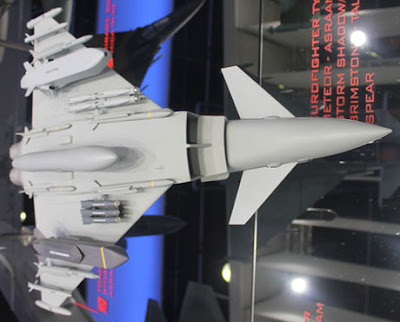


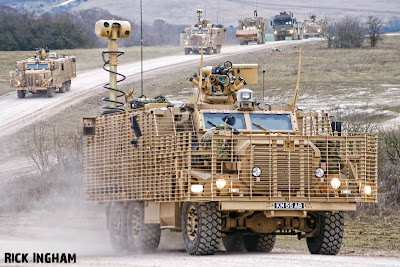

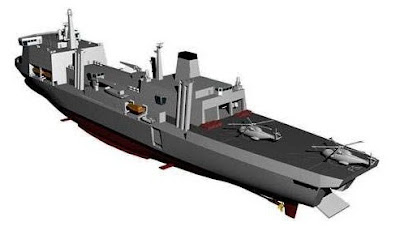

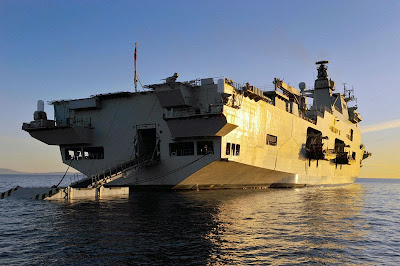




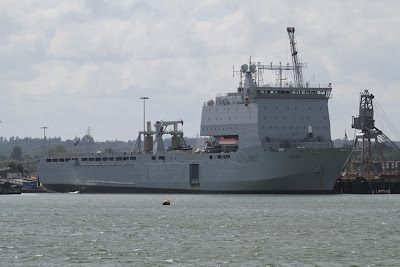


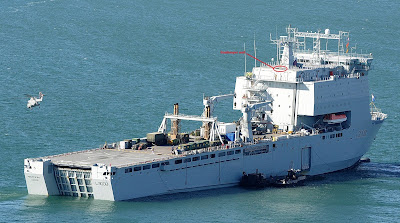





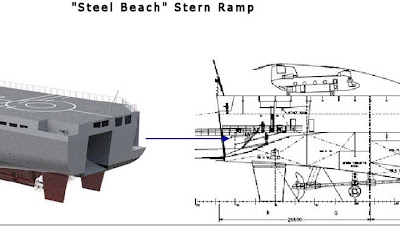


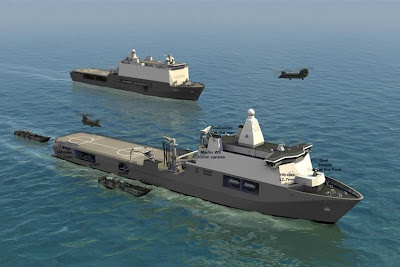














































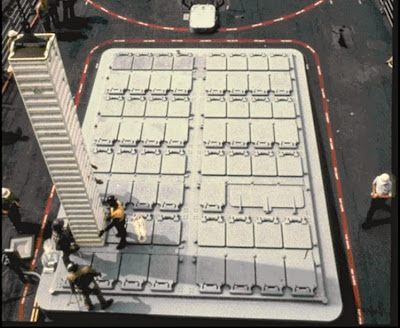
.jpg)
















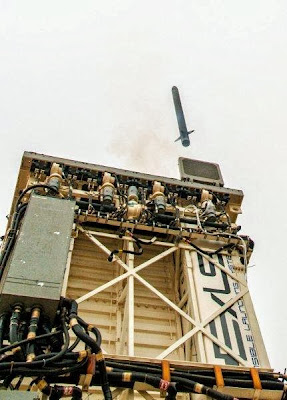

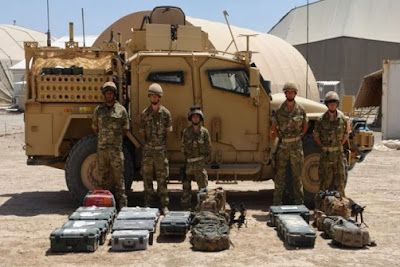







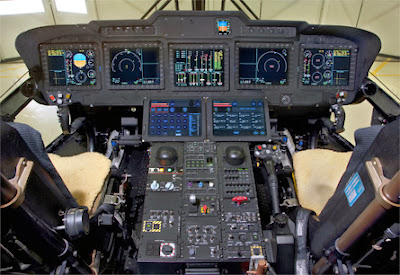



















.jpg)















